Do you have a question about the Samsung LE26C450E1W and is the answer not in the manual?
List of items included with your LCD TV.
Identifies the TV's control panel buttons and their functions.
Instructions for installing AAA batteries into the remote control.
Guide to the initial setup process for TV configuration.
Connects devices via HDMI/DVI for HD video and audio.
Connects devices via Component or AV/Scart cables for video and audio.
Connects to external audio systems via optical or audio cables.
Details about inserting a CI or CI+ CARD for paid channels.
Allows naming connected devices for easier input source selection.
Explains how to navigate menus and adjust settings using the OSD.
Displays scheduled TV programs and allows setting reminders.
Guide to using EPG to schedule programs in advance.
Guides on how to view and select channels on the TV.
How to select and manage favorite channels within the Channel Manager.
Process for scanning and storing available TV channels.
Automatically scans and stores channels from the antenna or cable source.
Manually scans and stores channels, offering more control.
Options for renaming, renumbering, and managing channels.
Select and adjust preset picture modes for different viewing scenarios.
Options to fine-tune picture quality like brightness, contrast, and colour.
Features to reduce power consumption and optimize energy use.
Detailed adjustments for screen colour and contrast.
Automatically adjusts picture size to the 16:9 aspect ratio.
Sets picture size to 16:9 for DVDs or wide broadcasting.
Default setting for movies or normal broadcasting.
Displays full image without cut-off for HDMI/Component signals.
Adjusts frequency values/positions for PC input.
Removes or reduces picture noise and aligns the screen.
Adjusts the PC screen position.
Adjusts sound balance and specific frequency levels.
Features like Virtual Surround and Dialog Clarity for enhanced audio.
Enables or disables the audio description function.
Sets the TV's internal speakers for audio output.
Adjusts DTV audio level for MPEG/HE-AAC signals.
Sets the sound mode to Dual I-II for stereo sound.
Configures the TV's clock for various timer functions.
Sets the TV to automatically shut off after a preset time.
Manages PIN codes, Child Lock, and Parental Ratings for program access.
Sets menu, teletext, and audio/subtitle preferences.
Enables, disables, and sets subtitle mode and language.
Includes settings for Game Mode, Menu Transparency, and Melody.
Configures PIP function, including source, size, and sound.
Performs tests for picture and sound issues, aiding troubleshooting.
Instructions for upgrading TV software via USB or broadcast signal.
Information on connecting external devices to the TV for HD quality.
Details on connecting a PC using HDMI, DVI, or D-sub cables.
Lists supported resolutions and frequencies for PC display modes.
Steps to connect a USB device for media playback.
Important information and limitations for using Media Play.
Instructions for selecting and playing video files.
Lists supported subtitle file extensions and formats.
Displays the sorting standard for files.
Notes on codec support, container issues, and bitrate limitations.
Instructions for selecting and playing music files.
How to view photos individually or start a slide show.
Instructions for playing entire groups of selected files.
Options for sorting files by category such as title, date, artist, or mood.
Configuration options for media playback, including resume play and DivX registration.
Explains Anynet+ functionality for controlling Samsung devices.
Diagram and steps for connecting a home theatre system via HDMI.
Overview of the Anynet+ menu options and device list.
Enables or disables the HDMI-CEC function for Anynet+ control.
How to select and switch between connected Anynet+ devices.
Procedure to select a recording device and initiate program recording.
Instructions for setting the TV to output sound through an external receiver.
Lists possible causes and solutions for Anynet+ not functioning.
Steps to initiate and start using the Anynet+ function.
Instructions on how to exit or disable the Anynet+ function.
Steps to activate Teletext and switch between modes.
Using coloured buttons for FASTEXT navigation and selection.
Details VESA mounting standards and specifications for compatible kits.
Instructions and precautions for securing the TV to a wall to prevent falling.
Solutions for common issues related to TV image quality.
Solutions for common issues related to TV sound output.
Native resolution and refresh rate of the TV panel.
Operating and storage temperature/humidity ranges.
Provides the physical dimensions of the TV with and without stand.
Risk of electric shock; do not remove cover; refer servicing to qualified personnel.
Ventilation, placement, heat, water, and battery disposal guidelines.
Fuse replacement, extension leads, and plug safety precautions.
Wire colour code for mains power supply connection.
Details warranty validity, service, and limitations for the product.
List of items included with your LCD TV.
Identifies the TV's control panel buttons and their functions.
Instructions for installing AAA batteries into the remote control.
Guide to the initial setup process for TV configuration.
Connects devices via HDMI/DVI for HD video and audio.
Connects devices via Component or AV/Scart cables for video and audio.
Connects to external audio systems via optical or audio cables.
Details about inserting a CI or CI+ CARD for paid channels.
Allows naming connected devices for easier input source selection.
Explains how to navigate menus and adjust settings using the OSD.
Displays scheduled TV programs and allows setting reminders.
Guide to using EPG to schedule programs in advance.
Guides on how to view and select channels on the TV.
How to select and manage favorite channels within the Channel Manager.
Process for scanning and storing available TV channels.
Automatically scans and stores channels from the antenna or cable source.
Manually scans and stores channels, offering more control.
Options for renaming, renumbering, and managing channels.
Select and adjust preset picture modes for different viewing scenarios.
Options to fine-tune picture quality like brightness, contrast, and colour.
Features to reduce power consumption and optimize energy use.
Detailed adjustments for screen colour and contrast.
Automatically adjusts picture size to the 16:9 aspect ratio.
Sets picture size to 16:9 for DVDs or wide broadcasting.
Default setting for movies or normal broadcasting.
Displays full image without cut-off for HDMI/Component signals.
Adjusts frequency values/positions for PC input.
Removes or reduces picture noise and aligns the screen.
Adjusts the PC screen position.
Adjusts sound balance and specific frequency levels.
Features like Virtual Surround and Dialog Clarity for enhanced audio.
Enables or disables the audio description function.
Sets the TV's internal speakers for audio output.
Adjusts DTV audio level for MPEG/HE-AAC signals.
Sets the sound mode to Dual I-II for stereo sound.
Configures the TV's clock for various timer functions.
Sets the TV to automatically shut off after a preset time.
Manages PIN codes, Child Lock, and Parental Ratings for program access.
Sets menu, teletext, and audio/subtitle preferences.
Enables, disables, and sets subtitle mode and language.
Includes settings for Game Mode, Menu Transparency, and Melody.
Configures PIP function, including source, size, and sound.
Performs tests for picture and sound issues, aiding troubleshooting.
Instructions for upgrading TV software via USB or broadcast signal.
Information on connecting external devices to the TV for HD quality.
Details on connecting a PC using HDMI, DVI, or D-sub cables.
Lists supported resolutions and frequencies for PC display modes.
Steps to connect a USB device for media playback.
Important information and limitations for using Media Play.
Instructions for selecting and playing video files.
Lists supported subtitle file extensions and formats.
Displays the sorting standard for files.
Notes on codec support, container issues, and bitrate limitations.
Instructions for selecting and playing music files.
How to view photos individually or start a slide show.
Instructions for playing entire groups of selected files.
Options for sorting files by category such as title, date, artist, or mood.
Configuration options for media playback, including resume play and DivX registration.
Explains Anynet+ functionality for controlling Samsung devices.
Diagram and steps for connecting a home theatre system via HDMI.
Overview of the Anynet+ menu options and device list.
Enables or disables the HDMI-CEC function for Anynet+ control.
How to select and switch between connected Anynet+ devices.
Procedure to select a recording device and initiate program recording.
Instructions for setting the TV to output sound through an external receiver.
Lists possible causes and solutions for Anynet+ not functioning.
Steps to initiate and start using the Anynet+ function.
Instructions on how to exit or disable the Anynet+ function.
Steps to activate Teletext and switch between modes.
Using coloured buttons for FASTEXT navigation and selection.
Details VESA mounting standards and specifications for compatible kits.
Instructions and precautions for securing the TV to a wall to prevent falling.
Solutions for common issues related to TV image quality.
Solutions for common issues related to TV sound output.
Native resolution and refresh rate of the TV panel.
Operating and storage temperature/humidity ranges.
Provides the physical dimensions of the TV with and without stand.
Risk of electric shock; do not remove cover; refer servicing to qualified personnel.
Ventilation, placement, heat, water, and battery disposal guidelines.
Fuse replacement, extension leads, and plug safety precautions.
Wire colour code for mains power supply connection.
Details warranty validity, service, and limitations for the product.
| Audio system | Dolby Digital Plus, Dolby Pulse |
|---|---|
| RMS rated power | 10 W |
| Number of speakers | 2 |
| Manual | Yes |
| Package weight | 9500 g |
| Power requirements | 220 - 240V, 50/60Hz |
| RS-232 ports | 0 |
| HDMI ports quantity | 3 |
| USB 2.0 ports quantity | USB 2.0 ports have a data transmission speed of 480 Mbps, and are backwards compatible with USB 1.1 ports. You can connect all kinds of peripheral devices to them. |
| Digital audio optical out | 1 |
| Product color | Black |
| LED indicators | Stand-by |
| Panel mounting interface | 200 x 100 mm |
| Display diagonal | 26 \ |
| Display resolution | 1366 x 768 pixels |
| Display technology | LCD |
| Native aspect ratio | 16:9 |
| Native refresh rate | 50 Hz |
| Display diagonal (metric) | 66 cm |
| Power consumption (standby) | 0.3 W |
| Ethernet LAN | No |
| Depth (with stand) | 222.2 mm |
|---|---|
| Width (with stand) | 646.5 mm |
| Height (with stand) | 477.3 mm |
| Weight (with stand) | 6800 g |
| Depth (without stand) | 77 mm |
| Height (without stand) | 432.3 mm |
| Weight (without stand) | 6200 g |
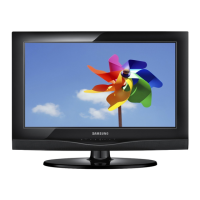
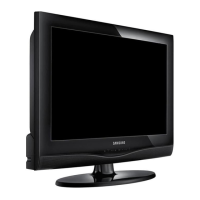


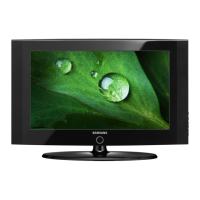

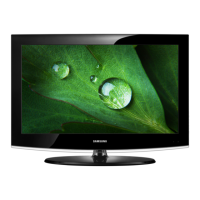
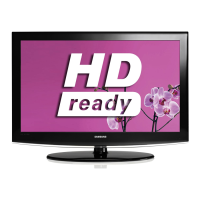


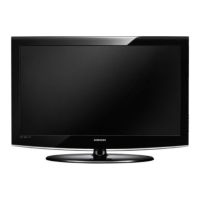
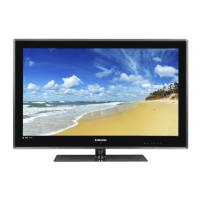
